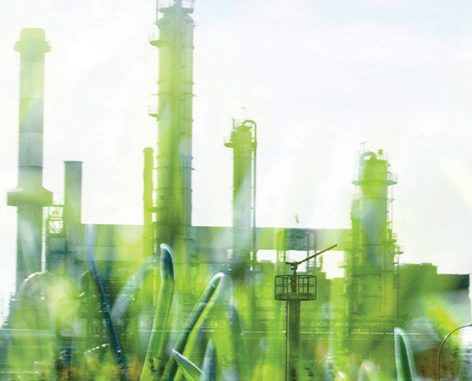
As economies across the globe scale up their efforts to tackle global warming in order to deliver on the promises made under the Paris Agreement, a new report released by the Energy Transmission Commission (ETC) in November 2018, “Mission Possible: reaching net-zero-carbon emissions from harder-to-abate sectors by mid-century”, shows that a net zero-carbon economy is not a myth. The report argues that it is technically and financially possible to achieve net-zero-carbon emissions from heavy industries (steel, cement, plastics, and heavy duty transport), trucking, shipping and aviation by 2060 in developing countries and by 2050 in developed countries, at a minor cost to economic growth. It outlines the possible routes to fully decarbonise these sectors, representing 30 per cent of global energy emissions and which may increase to 60 per cent by mid-century as other sectors lower their emissions. A look at the key findings from the report…
Findings and insights
ETC was convened to help identify pathways for change in our energy systems to ensure better growth and a better climate. The report was developed with contributions from over 200 industry experts over a six-month consultation process. Its findings show that full decarbonisation is feasible using already available technologies, of which some are more commercially ready than others. The cost of this abatement will be less than 0.5 per cent of the global GDP, which can be further reduced by improvements in energy efficiency, better usage of carbon-intensive materials and limiting demand growth for carbon-intensive transport. The report’s analysis also shows that it will be possible to decarbonise the harder-to-abate industrial sectors at $60 or less per tonne of CO2 saved for steel, $130 or less for cement, and $300 or less for plastics (ethylene production). In heavy industries, the efficient use of materials along with recycling and reuse in a more circular economy can reduce primary production and emissions by as much as 40 per cent globally.
The heavy duty transport sectors could be fully decarbonised, with 35-40 per cent improvement in energy efficiency, by leveraging the existing levels of technology. Improvements in energy and logistics efficiency and modal shift in both freight and passenger transport could help reduce the challenge. Trucks and buses running on batteries and hydrogen fuel cells are likely to become cost-competitive by 2030, while in the shipping and aviation segment, liquid fuels will remain the preferred option. The replacement of liquid fuels with biofuels or emission-free synthetic fuels can make the segment zero carbon..
Technology options
Decarbonisation of these sectors will require a range of technologies, depending on the location and the availability of resources. Across sectors, the use of hydrogen will most certainly increase by 7-11 times by mid-century. There are two possible routes to zero-carbon hydrogen – electrolysis, and carbon capture and storage through steam methane reforming. Apart from that, bioenergy and bio-feedstock will be required in several sectors, but their use will have to be tightly regulated to avoid an adverse environmental impact. Their use should be focused on priority sectors where alternative technologies are not available or are more costly, such as aviation and plastic. Carbon capture or storage will be required to capture process emissions from the cement industry. It may also be the most cost-competitive decarbonisation option for other sectors in several geographies..
Policy levers
Several key policy levers that can accelerate the decarbonisation process have been broadly highlighted in the report:
- Carbon intensity mandates on industrial processes, heavy duty transport and the carbon content of consumer products must be tightened.
- An adequate carbon pricing mechanism adhering to the internationally agreed and comprehensive pricing systems must be introduced. This must recognise the potential to use the differential prices applied to downstream consumer products across the sectors.
- A shift from a linear to a circular economy needs to be encouraged through appropriate regulation on material efficiency and recycling.
- The green industry must be supported through investments in R&D, deployment support, and public procurement to create initial demand for green products and services.
- Public-private collaboration must be encouraged to build necessary energy and transport infrastructure.
The way forward
Moving ahead, industries and investors can anticipate the tremendous transformation in industries and heavy transport if a low-carbon infrastructure is realised. ETC’s estimates suggest that this would keep the rise in global temperature to 1.5-2 ºC in line with the Intergovernmental Panel on Climate Change’s target. This sends out a strong signal to investors, businesses and policymakers on the possibility of full decarbonisation. The report presents a fact base for industry groups and private companies to put in place policies and investments citing roadmaps, collaborations and projects aiming for net-zero-carbon emissions. It also encourages businesses across multiple sectors to question their procurement practices and make commitments to buying “green” products and services.
